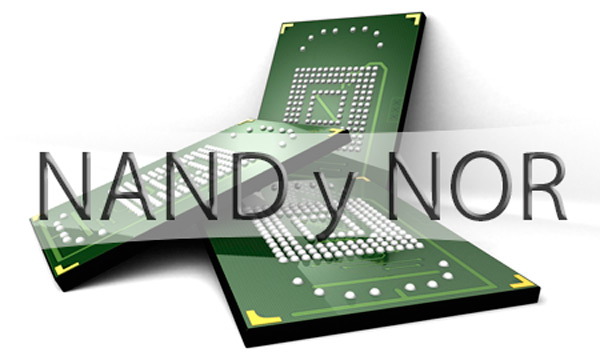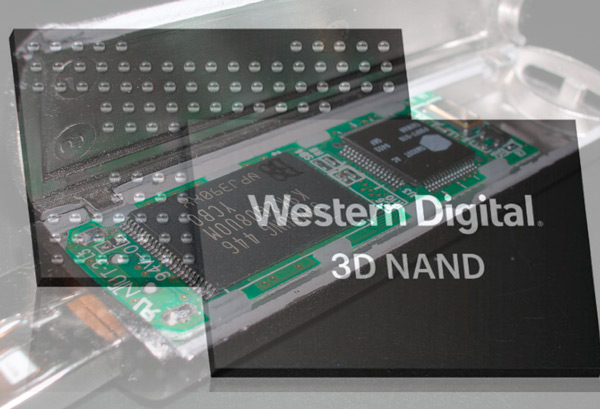
Flash memories have become one of the most important elements for most users today, which is how they have become a simple and easy-to-use tool for save and transport documents or files with great ease.
They are currently used in USB drives and memory cards , where it is a memory that can be reprogrammed and deleted , allowing its users to store, modify and delete all kinds of information. Because of this, many people use them to transfer files from the mobile to the computer or vice versa.
Considering its benefits and importance , it can be said that these flash memories have gradually replaced other recording systems because to that it presents a compact design and a large space of storage. According to this, here we explain a little more about this unit and what is its function.
>
Index:
What is a flash memory and what is it for in computing?

Flash memory is a device capable of storing large amounts of information and files in a small space, thus allowing to read and write multi-position through a series of electrical impulses. Thanks to all this it allows to achieve higher operating speeds compared to EEPROM technology , which only allows to act on a single memory cell in each of programming operations .
In other words, this memory is a chip that is mainly used to store and transfer data between different digital devices , such as from a computer to a smartphone or tablet . It can be reprogrammed or erased electronically. Therefore, these flash drives can be found in MP3 players, digital cameras, solid state drives, USB sticks, among others.
In this way, these units are a different type of EEPROM, which can be programmed in large blocks , where they incorporate the use of gate transistors floating that allows to fulfill the function of being able to save information and data on a large scale.
How do file systems work in flash memory?
These units are mainly characterized by offering a high memory density, this is because they only require a few components for each of memory cells . The structure of this cell is very similar to the EEPROM , but each of the flash memory cells has a basic channel with its source and the electrons drainage that are separated by each of the channels.
On each of the cell channels of this unit is a door floating that is separated from the channel by a layer of extremely thin oxide. The quality of this layer is very important for what will be the correct functioning of memory .
Above the floating door is the control door , which is used to charge the capacitance of the door during the writing phase . All this ensures that the operation is adequate.
Usually, memory cells work by storing the load in the floating door, while cell programming involves a process known as “Hot electron injection”. Now when programming the control gate connects to a programming voltage . While the drain will have an approximate voltage at half of this value with the source grounded.
The voltage is coupled to the floating gate using the dielectric system , which allows to raise the floating gate to the programming voltage > and thus reversing the channel below. All this results in the electrons of the channel being able to achieve a higher speed of drift and greater kinetic energy . Offering better results and better performance.
What are the uses you can give a flash memory?
One of the advantages of this storage unit is that it can be used in different ways, this will offer its users to get a better performance and make the most of memory .
Therefore, here we explain what are the main uses you can give this unit:
As a hard disk
Being an extremely small storage unit offers an advantage that is portability , this allows it to be taken anywhere without any problem.
Despite being a small size, it has a large amount of space to store information and file . This will give you the possibility of using it as an external hard drive where you can save information, programs and data from the computer so you can access them whenever you need them regardless the place where you are.
This is how hard drives are currently being manufactured with flash memory 320 GB NAND or with very similar sizes. However, these hard drives are inconvenient if we compare them with traditional hard drives, and they have a limited number of accesses .
As RAM
Another of the advantages that we can find with flash memories is that we can use it as a RAM , that is, it will allow you to access the system faster information stored in it, having a shorter waiting time than you can have with other devices.
As we already know RAM memories usually tend to be temporarily, since when shutting down or restarting the system they are blank again , thus offering a space available all the time. Therefore, if you have a flash drive you can start taking advantage of it and use it as a kind of RAM on your computer .
This is how since 2012 several attempts have been made to use these flash memories such as RAM , but so far they are still slower than the conventional DRAM . However, these spend less energy than conventional ones and are much cheaper , which offers an advantage for their users.
NAND and NOR How are the main types of flash memories different?

There are two types of flash memory currently , these are known as NAND and NOR , each of them differ depending on the user’s needs. Therefore, you must consider what each of them consists of so that you can use the correct type.
In the case of NOR it is a bit slower when you want to save or delete the information stored in it , but allows random access storage . In other words, it uses the address and full data buses and the information contained there does not have to be updated every so often.
In the case of file systems that work with the NOR types incorporate different mechanisms that are unnecessary for the NAND type , the which requires additional mechanisms, which, like the previous case, are unnecessary for the NOR type.
While the NAND type is much faster than the NOR , but it does not use the random access memory . Therefore, the use of each of them will basically depend on the user’s needs. If what you are looking for is a ROM chip replacement then it is best to use the NOR version . But if you want to replace memory cards, it is best to use the NAND type .
What kind of flash memory do USB devices use?

USB sticks or also known as USB stick, external memory, flash drive or drive usually use a data storage device that you use NAND-type flash memory , which allows to save data and information faster.
This is how this type of flash memory they use allows them what is reading and writing multiple positions during the same operation . All this is carried out using the electrical impulses that allow to obtain the necessary speeds.
This type of NAND memories usually work differently, since they usually use a injection tunnel for writing and for tunnel erasure In addition, making use of another type of door makes it cost much less than the NOR type, as well as more resistant to operations.
It is also important to mention that the great expansion that NAND has had is due to its easy deletion mechanism , which makes creation more profitable of devices with this type of memory card .